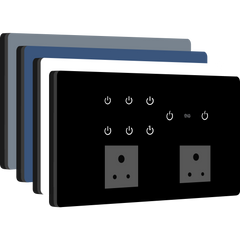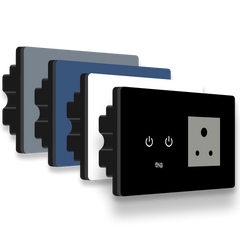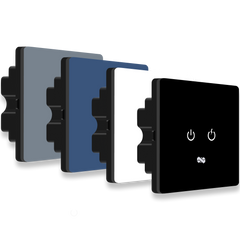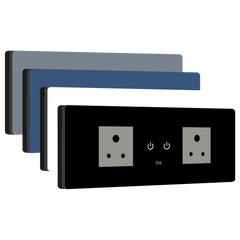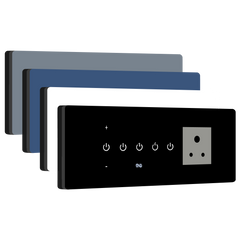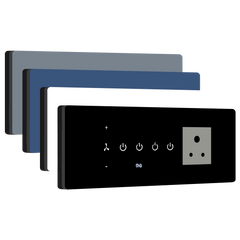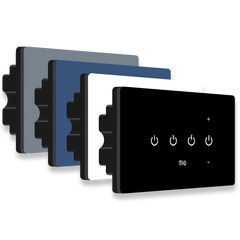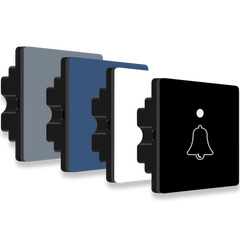Integration Options: Maximizing Your Smart Home’s Potential

1. Definition
Integration options in smart home technology refer to the various ways a smart device, such as a smart switch, can connect and communicate with other systems, platforms, or devices. Integration determines how seamlessly the smart switch works with other components of your smart home, including voice assistants, mobile apps, hubs, and third-party ecosystems.
For example, a smart switch with broad integration options may support Amazon Alexa, Google Home, and Apple HomeKit, as well as work with other devices like smart thermostats, lights, and security systems. This flexibility allows users to create a cohesive and efficient smart home environment.
2. Key Takeaways
- Integration options allow smart switches to connect with a wide variety of smart home ecosystems, platforms, and devices.
- The broader the integration options, the more customizable and scalable your smart home setup can become.
- Key integration options include voice assistant compatibility, app integration, and interoperability with other smart devices.
- Choosing smart switches with flexible integration ensures future-proofing and ease of use for your smart home.
3. Why Integration Options Are Important
-
Enhanced Functionality
Integration options allow smart switches to do more than just turn lights on and off. For example, they can work with smart home platforms to execute complex automation routines like turning off all devices when you leave home or dimming lights during movie time. -
Flexibility and Customization
With versatile integration options, users can tailor their smart home setup to fit their needs. For example, a smart switch that integrates with both Alexa and Google Home lets you choose your preferred voice assistant. Similarly, compatibility with apps like SmartThings or IFTTT enables customized automation rules that suit your lifestyle. -
Future-Proofing
A smart switch with robust integration options is more likely to stay relevant as new technologies emerge. For instance, switches that support popular standards like Zigbee, Z-Wave, or Matter can easily integrate with new devices and platforms, ensuring your investment is future-ready. -
Simplified Control
Integration ensures that you don’t need multiple apps or control systems to manage your smart home. For example, a switch integrated with a central hub allows you to control all your devices from a single interface, reducing complexity. -
Seamless Automation
Integration enables smart switches to work in harmony with other devices. For instance, a smart switch can be programmed to turn off when a motion sensor detects no movement, or to dim lights automatically when a smart thermostat adjusts to evening mode.
4. Example/Use Case
Imagine a smart home where your smart switch integrates with Alexa, Google Home, and your smart thermostat. When you say, “Goodnight,” the smart switch dims the bedroom lights, the thermostat adjusts to an energy-saving mode, and your security system activates. This seamless integration creates a more comfortable and energy-efficient environment.
Another example: If your smart switch is compatible with IFTTT, you can set it to blink your lights when you receive an important email or notification. The more integration options your switch offers, the more creative you can be with your smart home setup.
5. Frequently Asked Questions (FAQs)
-
What are some common integration options for smart switches?
Common options include compatibility with voice assistants like Alexa, Google Assistant, and Siri; integration with smart home hubs like SmartThings or Wink; and support for automation platforms like IFTTT or Matter. -
How do I know if a smart switch is compatible with my devices?
Always check the product’s specifications or packaging for a compatibility list. Look for keywords like Alexa, Google Home, Apple HomeKit, or Matter to ensure your devices work together. -
Do I need a smart home hub for integration?
Some smart switches require hubs like Zigbee or Z-Wave for integration, while others are hub-independent and connect directly to Wi-Fi. Choose a switch based on your current smart home setup. -
Can I integrate multiple smart switches from different brands?
Yes, if the switches support the same platform or standard, such as Alexa, Google Home, or Matter. Using a central hub can also help unify different devices. -
Will more integration options make my setup harder to manage?
Not necessarily. Many smart platforms consolidate control into a single app, making management simple. However, ensuring compatibility during purchase simplifies integration.
Upgrade your smart home with Iotics Smart Switches that offer seamless integration with leading platforms like Alexa, Google Home, and Apple HomeKit. Future-proof your home and unlock endless automation possibilities. Explore Now.
7. Related Terms
- Alexa Compatibility
- Home Automation
- Zigbee and Z-Wave
- Smart Hubs

